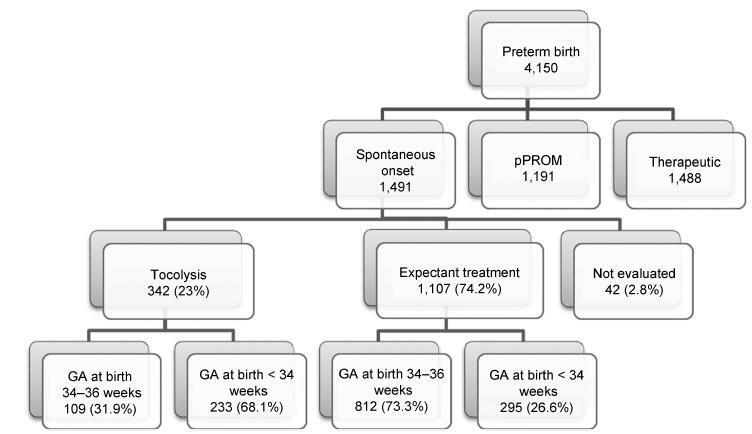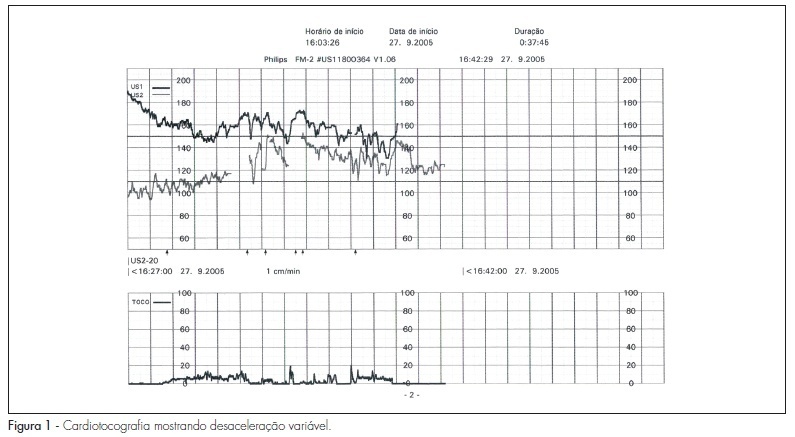You searched for:"Marcelo Luis Nomura"
We found (10) results for your search.Summary
Revista Brasileira de Ginecologia e Obstetrícia. 2020;42(9):562-568
The present comprehensive review aims to show the full extent of what is known to date and provide a more thorough view on the effects of SARS-CoV2 in pregnancy.
Between March 29 and May, 2020, the words COVID-19, SARS-CoV2, COVID- 19 and pregnancy, SARS-CoV2 and pregnancy, and SARS and pregnancy were searched in the PubMed and Google Scholar databases; the guidelines from well-known societies and institutions (Royal College of Obstetricians and Gynaecologists [RCOG], American College of Obstetricians and Gynecologists [ACOG], International Society of Ultrasound in Obstetrics & Gynecology [ISUOG], Centers for Disease Control and Prevention [CDC], International Federation of Gynecology and Obstetrics [FIGO]) were also included.
The COVID-19 outbreak resulted in a pandemic with > 3.3 million cases and 230 thousand deaths until May 2nd. It is caused by the SARS-CoV2 virus and may lead to severe pulmonary infection and multi-organ failure. Past experiences show that unique characteristics in pregnancy make pregnant women more susceptible to complications from viral infections. Yet, this has not been reported with this new virus. There are risk factors that seem to increase morbidity in pregnancy, such as obesity (body mass index [BMI] > 35), asthma and cardiovascular disease. Current reports describe an increased rate of pretermbirth and C-section. Vertical transmission
Summary
Revista Brasileira de Ginecologia e Obstetrícia. 2018;40(4):171-179
To evaluate the use of tocolysis in cases of preterm birth due to spontaneous preterm labor in a Brazilian sample.
A sample of 1,491 women with preterm birth due to spontaneous preterm labor were assessed, considering treatment with tocolysis or expectant management, according to gestational age at birth (< 34 weeks and 34 to 36 þ 6 weeks) and drugs prescribed. The study took place in 20 Brazilian hospitals from April 2011 to July 2012. Bivariate analyses were conducted to evaluate associations with sociodemographic and obstetric characteristics and odds ratios with their respective 95% confidence intervals were estimated for maternal and neonatal outcomes.
A total of 1,491 cases of preterm birth were considered. Tocolysis was performed in 342 cases (23%), 233 of which (68.1%) were delivered before 34 weeks. Within the expectant management group, 73% was late preterm and with more advanced labor at the time of admission. The most used drugs were calcium channel blockers (62.3%), followed by betamimetics (33%). Among the subjects in the tocolysis group, there were more neonatal and maternal complications (majority non-severe) and an occurrence of corticosteroid use that was 29 higher than in the expectant management group.
Tocolysis is favored in cases of earlier labor and also among thosewith less than 34 weeks of gestation, using preferably calcium channel blockers, with success in achieving increased corticosteroid use. Tocolysis, in general, was related to higher maternal and neonatal complication rates, which may be due to the baseline difference between cases at admission. However, these results should raise awareness to tocolysis use.

Summary
Revista Brasileira de Ginecologia e Obstetrícia. 2010;32(2):94-98
DOI 10.1590/S0100-72032010000200008
Monoamniotic twin pregnancies are very rare, but they are associated with high fetal morbidity and mortality. There is much controversy regarding the follow-up and obstetric procedures towards prenatal diagnosis of intertwined umbilical cords. In this article, we describe a case of monoamniotic pregnancy with diagnosis of intertwined umbilical cords, and we discuss aspects related to the follow-up and obstetric procedures through a brief literature review.

Summary
Revista Brasileira de Ginecologia e Obstetrícia. 2009;31(8):397-403
DOI 10.1590/S0100-72032009000800005
PURPOSE: to indentify the prevalence and risk factors of maternal colonization by group B streptococcus (GBS) in pregnant women with premature labor (PL) and/or premature membrane rupture (PMR). METHODS: two anal and two vaginal swabs were collected from 203 pregnant women with diagnosis of PL or PMR assisted at the practice along one year. Pregnant women with imminent labor at admission were excluded. One swab of each source was placed in a transfer milieu and sent for culture in blood-agar plates; the two remaining swabs were incubated for 24 hours in Todd-Hewitt milieu for further sowing in blood-agar plates. Risk factors were analyzed by the chi-square test, Student's t-test (p-value set at 0.05 and 95% confidence interval) and logistic regression. The following variables were analyzed: age, race, parity and mother schooling; culture results by source and type of culture; admission diagnosis; gestational age at admission; asymptomatic bacteriuria; gestational age at delivery; type of delivery; neonatal GBS colonization rate and immediate neonatal condition. RESULTS: prevalence of maternal GBS colonization was 27.6% (56 cases). The colonization rates according to gestational complications were 30% for PMR, 25.2% for PL and 17.8% for PL + PMR. Univariate analysis has shown that the variables Caucasian race, low level of schooling and bacteriuria were associated with higher colonization rates. Multivariate analysis showed that the presence of urinary infection was the only variable associated with maternal colonization. The GBS detection rate was significantly higher with the use of a selective milieu and collection from both anal and vaginal sources. The neonatal colonization rate was 3.1%. Two cases of early sepsis by GBS occurred in the sample, with prevalence of 10.8 cases per one thousand live births and 50% mortality rate. CONCLUSION: the studied sample showed high maternal colonization rates by Streptococcus agalactiae. To increase GBS detection rate, it is necessary to use a selective culture milieu and to combine anal-rectal and vaginal cultures. There was a high incidence of early neonatal sepsis.
Summary
Revista Brasileira de Ginecologia e Obstetrícia. 2008;30(8):393-399
DOI 10.1590/S0100-72032008000800004
PURPOSE: to study cervical colonization in women with preterm labor or premature rupture of membranes. METHODS: two hundred and twelve pregnant women with preterm labor or premature rupture of membranes were studied. Two cervical samples from each woman were collected and bacterioscopy and culture were performed. Association of cervical microorganisms and urinary tract infection, chorioamnionitis, fetal stress, antibiotic use, prematurity, neonatal infection, and neonatal death were evaluated. RESULTS: the prevalence of endocervical colonization was 14.2% (CI95%=9.5-18.9%), with similar results in preterm labor or premature rupture of membranes. Group B streptococcus was the most prevalent organism (9.4%). Other organisms isolated were Candida sp, Streptococcus sp, Streptococcus pneumoniae, Escherichia coli and Enterococcus sp. The most common findings of bacterioscopy were a reduced number of lactobacilli and a great number of leukocytes. Endocervical colonization was associated with a higher occurrence of urinary tract infection (23.8 versus 5.4%; p<0.01), early-onset neonatal infection (25.0 versus 7.3%; p<0.01) and neonatal mortality (two cases in colonized women; p<0.02) when compared with a negative culture of endocervical mucus. CONCLUSIONS: this study showed high prevalence of endocervical colonization despite the use of a nonselective culture media. The main microorganism isolated was group B streptococcus, but other organisms were present in one third of the studied population. More studies are needed to evaluate the influence of endocervical colonization on obstetrical outcome and on neonatal infection and mortality.
Summary
Revista Brasileira de Ginecologia e Obstetrícia. 2007;29(7):331-334
Summary
Revista Brasileira de Ginecologia e Obstetrícia. 2007;29(7):370-375
DOI 10.1590/S0100-72032007000700008
Studies have shown possible risk relations among oral illnesses, mainly periodontal disease and adverse pregnancy outcomes, such as prematurity, low birth weight and preeclampsia. The explanation for this hypothesis is based on the fact that periodontal disease is an infectious state, which may increase maternal serum cytokines through the release of such agents directly from the periodontal pocket or by through the dissemination of pathogenic bacteria, inducing systemic production. This assumption is based on the knowledge that the physiopathology of the pregnancy complications cited above is associated with the presence of some cytokines in the maternal serum. The present study work has the objective to review literature in search of evidence to these alleged associations. Although a number of clinical studies have been found in this review, we noticed a lack of methodological standards, what limits the conclusions about this topic. On the other side, the fact that periodontal disease is not yet a confirmed risk factor for adverse pregnancy outcomes does not reduce the importance of oral health maintenance during pregnancy, since it is important to allow adequate feeding without pain and bleeding in order to maintain an adequate nutritional supply.
Summary
Revista Brasileira de Ginecologia e Obstetrícia. 2004;26(7):579-582
DOI 10.1590/S0100-72032004000700011
Paroxysmal nocturnal hemoglobinuria is a rare disease caused by an acquired gene mutation of the hematopoietic system, with 16-18% of the cases diagnosed during pregnancy. We describe two cases of pregnancy in women with paroxysmal nocturnal hemoglobinuria. Maternal mortality reaches 8-10%, mainly due to thromboembolism and, less frequently, to leukemic transformation. Fetal losses may reach 30%. These two cases illustrate a serious and extremely complex situation, which is the obstetrical management of a patient with a very rare, serious and potentially fatal hematological condition. Using a multidisciplinary approach in tertiary care centers, it is possible to attain good maternal and perinatal outcomes.